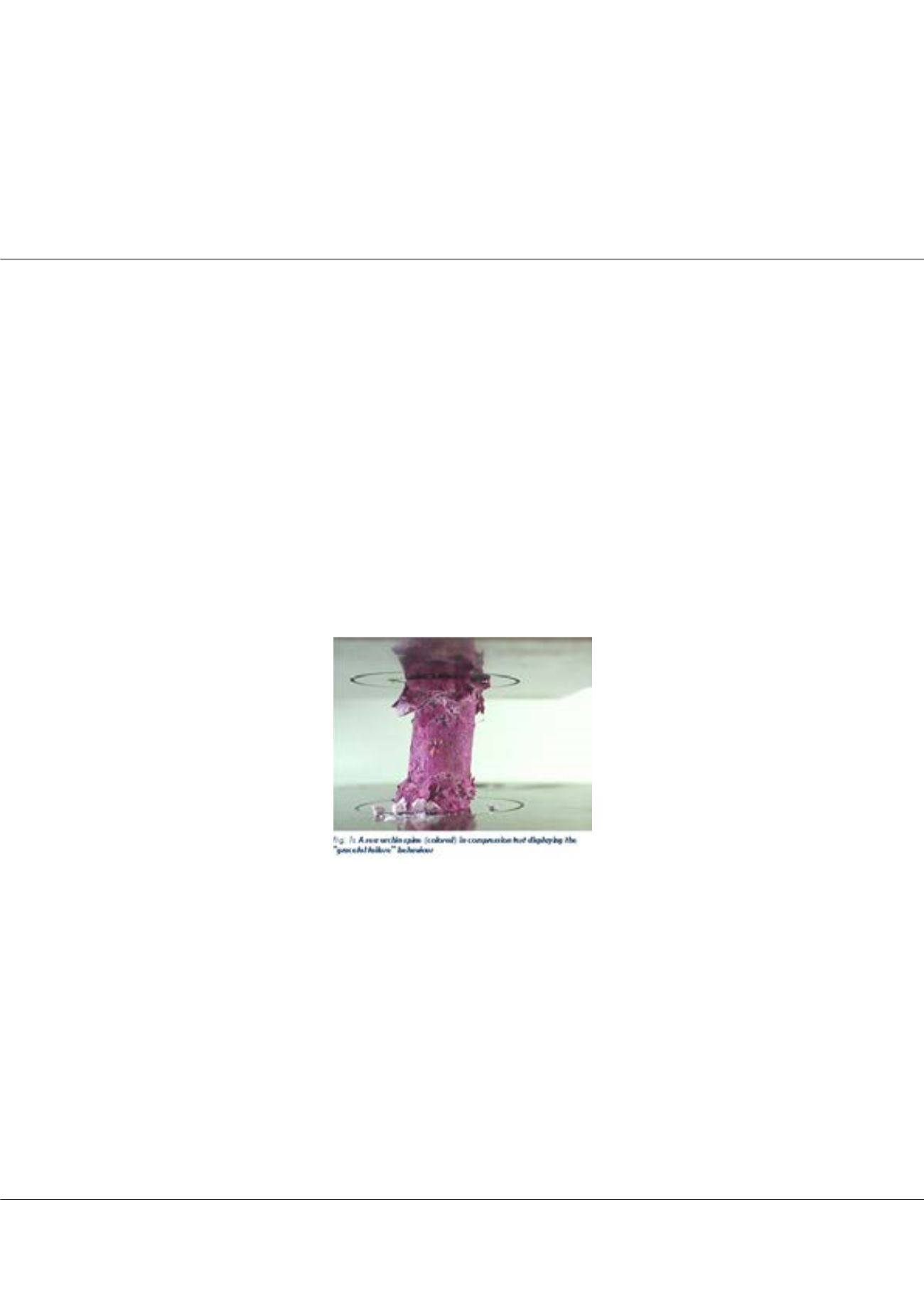

Page 64
Notes:
conferenceseries
.com
RRJOMS | Volume 5 | Issue 4 | July, 2017
July 27-29, 2017 Vancouver, Canada
10
th
International Conference on
Emerging Materials and Nanotechnology
The potential of improving building construction materials by a biomimetic approach
Klaus G Nickel
1
, Katharina Klang
1
, Christoph Lauer
1
, NicuToader
2
and
Werner Sobek
2
1
University Tübingen, Germany
2
University S
tuttgart,
Germany
T
he design of spines from some reef inhabiting sea urchins (
Heterocentrotus mamilatus, Phyllacanthus imperialis
) has shown
to be responsible for high energy dissipation during compressive straining. It is shown that unusually high stresses are
required to compress the material, which fails in a "graceful" manner during an overall straining of several tens of percent.
The principal behind the mechanism involves the layering/gradation/ordering of pore space within a basically brittle material
(Calcite). We will show the details of the structures and the results of the characterization by uniaxial compression and pin
indentation. The natural material has a hierarchical design including a structuring on the nano-scale to prevent a failure by
simple cleavage. It would therefore be difficult to scale up all structural features of this brittle material. We will discuss how
improvements of material can nonetheless be implemented by abstracting only the more macroscopic features and choosing a
suitable material. First efforts to apply this biomimetic principle to concrete as a modification of functional graded concretes
confirm the effectiveness in construction materials. The design is not only beneficial for failure tolerance in cases of impacting
objects, but improves at the same time thermal insulation properties and lowers the total weight of constructions. The concrete
was realized by spraying and slip casting methods. We will also present a recently developed alternative method for the
manufacture of 3D concrete constructions (“hydroplotting”), which allows the realization of very detailed designs
.
Biography
Klaus G Nickel is Professor of Applied Mineralogy at the Faculty of Science of the University of Tübingen. His career involved a Dipl-Geol. from the University of
Mainz (D), a PhD from the University of Tasmania (Hobart, AUS) and research positions at Max-Planck-Institutes (for Chemistry, Mainz, and Metals Research,
Stuttgart). His main research interest is in materials science in the field of Advanced Ceramics and Composites. The research covers processing, characterisation
and evaluation of technical ceramics, typically alumina and zirconia in the oxides and carbon, carbides, nitrides, borides on the non-oxide side. His particular
expertise exists in the chemical property evaluation (oxidation and corrosion). Other research goals are phase relations, mechanical properties and bionics of
biomaterials and ceramics
.
klaus.nickel@uni-tuebingen.deKlaus G Nickel et al., Res. Rev. J Mat. Sci. 2017
DOI: 10.4172/2321-6212-C1-002
















